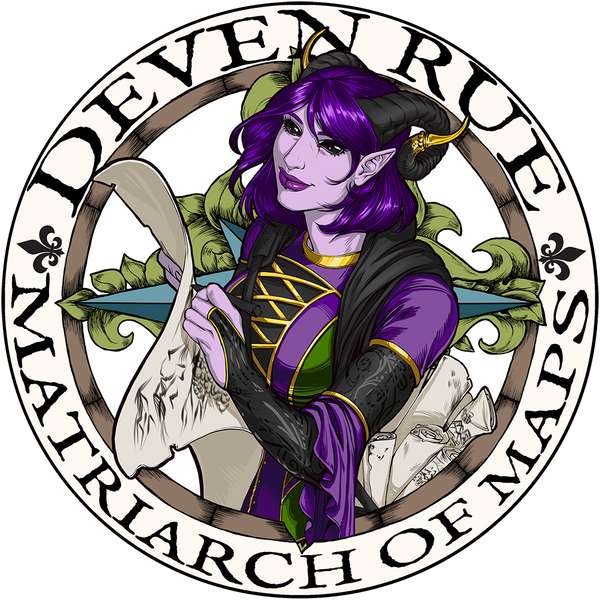How to Read a Fantasy Map
This might seem like a "common sense" thing to you but I can assure you, a great deal of people have a very misguided way of looking at and reading fantasy maps. I know this because whenever I work with people on their maps, I realize the are looking at it from a perspective that often gets them lost in the details instead of focusing on the maps true purpose: to provide a look into the history of the world you're exploring.
Because of this, I wanted to share a few things to keep in mind when using a fantasy map in a game, story, campaign, or when you start creating your own.
- All maps are in the past. Towns can be demolished or spring up overnight. Rivers can change course. Mountains can crumble. The map doesn't have to be 100% accurate to the current state of the world. Merely, a glimpse into what it once looked like.
- All maps are representational. They are there to provide markers to help you navigate from one point to another, to give an idea of the size of the world you're exploring, and to hint at what each area is like. Nothing is drawn to scale because if it were, there'd be very little detail and thus add very little to the story.
- Distance doesn't matter the way you think it does. Whether there is five miles between two towns or 10, it won't matter much if those miles aren't able to be traversed due to impassible terrain. You'll have to take a 25 mile road that leads around it. If you decide to try to make it through anyhow, your traveling speed is reduced to a mile every 12 hours. This is why I tell people to make the distance on their map whatever they feel works best for their story. Wild lands where people aren't settled will have longer distances between settlements. More populated areas, less so. Make it fit what your story needs.
- Don't worry about the details. I'll get a lot of "how do I represent different kinds of trees?" Or "what if there's trees growing on those hills/mountains?" You don't. You tell your players/readers there are different trees in different areas when you describe the scene to them. Your map isn't there to be an exact representation of the land, it's there to intrigue your players/readers, and give them an idea of where parts of the story are in relation to each other. Add the mountains where they should be and don't block them with trees.
- Ignore planetary curvature. Here's the only place where I'll state that it's good to pretend your world is flat. Again, your map is here to help tell your world's history & story. It's there to help give a sense of immersion and exploration. What it's not meant to do, is be so bogged down with being exact that you never finish it. There's FAR too much math involved in creating a projection. Let's save the math for the game.
- It doesn't have to be perfectly "realistic". Knowing we have some pretty strange planets out there, is a good reason to believe that were even a small portion of our population able to cast magic at random, that the affects on our own planet would be extraordinary and unpredictable. This is why when people try to "correct" fantasy cartographers on how things "don't work that way", they lose not only the point of fantasy cartography but also that there are FAR stranger things in the universe than a sudden 3 mile high plateau or a lake that feeds rivers or whatever else people want to nitpick. However, I do recommend applying enough earth sciences to your maps so they don't seem jarring nor break immersion.
- North isn't "up". Standing on a surface of a planet, "up" is the sky above you, not north. North is isn't even specifically in one single direction! Meaning, as you travel the planet, you cannot walk north in a straight line and reach the north pole. You'd have to compensate for the curvature of the planet and thus why compasses are so crucial to travel. It's also why sailing routes are plotted in curved paths so the ship doesn't end way off course.
Basically, all this is to say, that we should be looking at fantasy maps more like a character in our stories than a tool to hand players. What we want to do is give them a snapshot of the world they're exploring without answering all the mysteries of where they are going. Your map, or your world in general, is it's own NPC with a rich history, a story line of it's own, and a lot going on.
